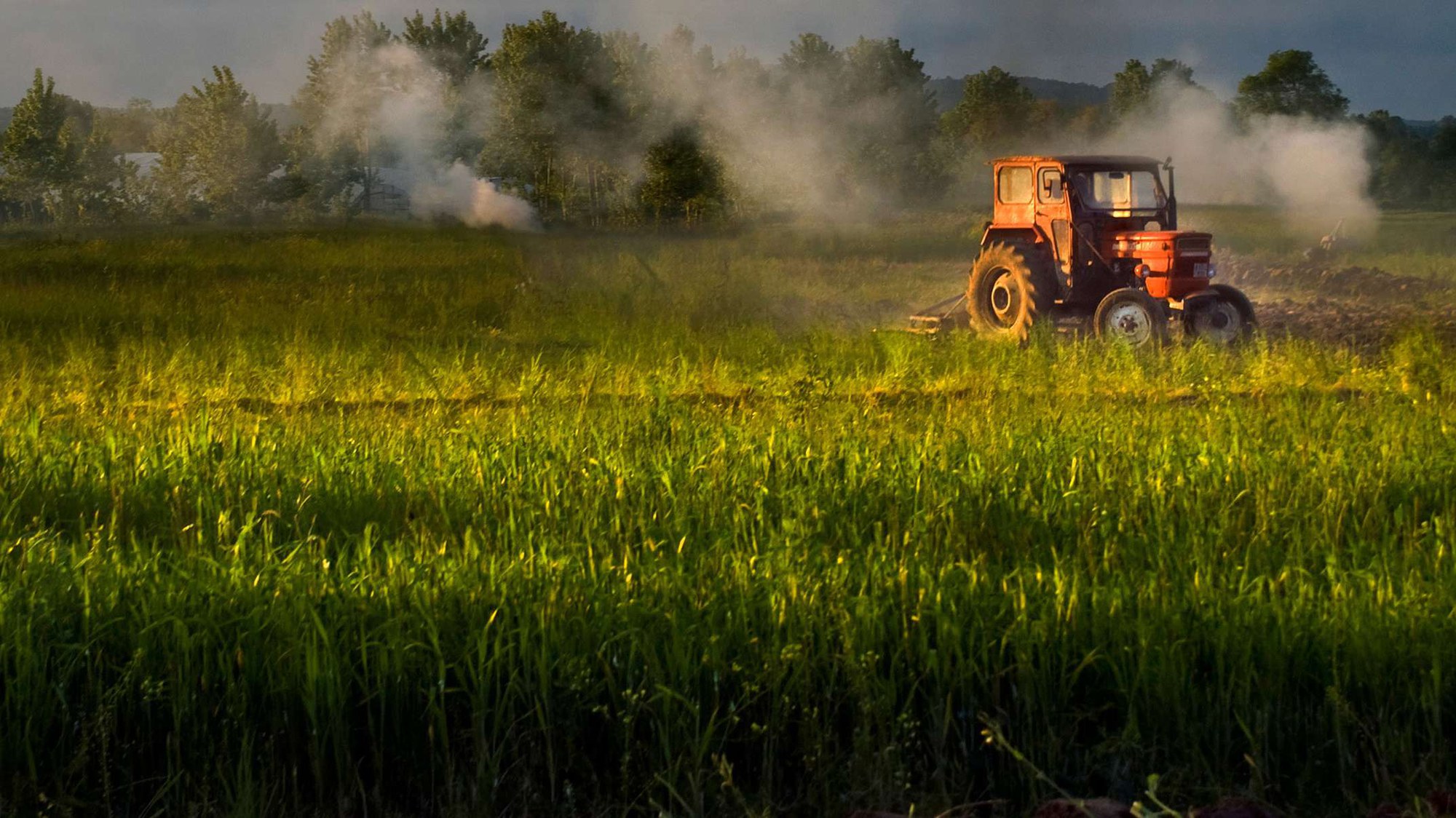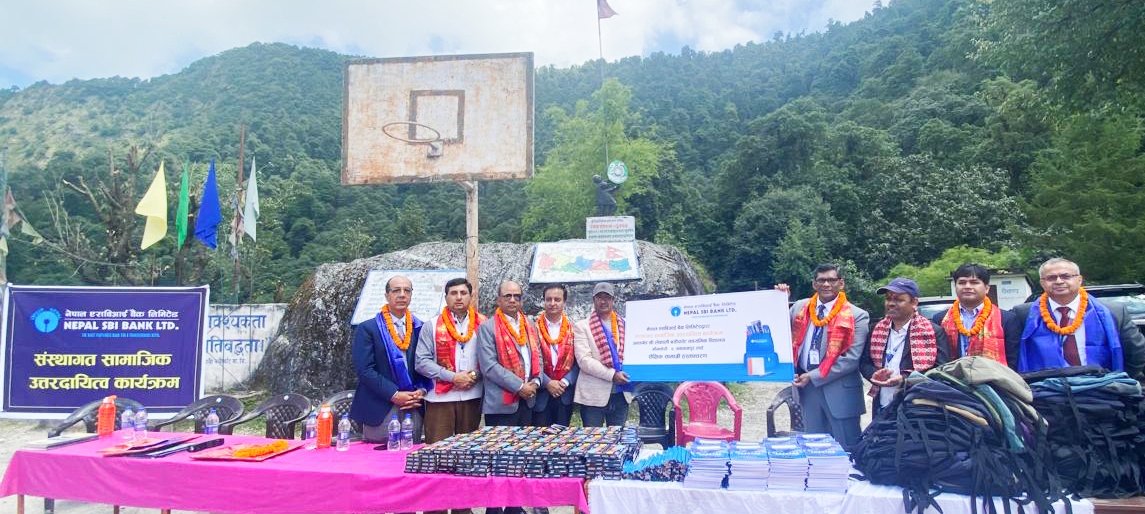How remittance is fuelling agricultural risks and unplanned sprawl

KATHMANDU: APRIL. 14 -The rich and pampered farmlands of Terai, as natives nostalgically describe, are no longer a reality today.
Colourful houses of concrete, some pink and blue, have gradually replaced the luscious green farmlands.
“Year after year, huge tracts of land are being converted into residential plots, and these plots are agricultural lands,” says Shyam Sah at Mukti Nepal, a non-governmental organisation raising awareness on safe foreign employment in Golbazar, Siraha.
“Once an individual goes abroad, they primarily invest in land, after paying off their loans. Then they build a house. Construction work is everywhere and happening rapidly,” says Sah.
Over the years, international migration in the form of foreign employment is on an increasing trend from the Terai belt, which has subsequently increased the economic capacity of the families of migrant workers.
The elevated income source has thereby contributed to rapid urbanisation in the region. Arable lands are quickly turning into lucrative plots which are fuelling agricultural risks.
“In the past ten years, about 99 percent of those who have migrated abroad – to Doha, Qatar, Malaysia, and Saudi Arabia, among others – have shifted to towns and have built concrete houses,” says Saroj Kumar Thakur, Golbazar Branch Manager of Kamana Sewa Bikash Bank Ltd in Siraha. “Their families work in agricultural fields and their incomes are used to pay for daily expenses and the foreign employment savings are used to build houses.”
Many Terai residents opt for Gulf countries in lack of better opportunities in Nepal. Securing a passport remains the top priority, and policy changes over the decades have facilitated the outflow of the working population in staggering numbers.
According to labour and migration expert Ganesh Gurung, two policy changes radically shifted the trend of foreign employment in Nepal. These shifts are directly changing the agricultural landscape.
The first policy change was in 1991 when the government decided to provide passports to everyone, but could only be acquired from Kathmandu, according to Gurung.
“Then, in 2001, a new policy allowed people to get passports from the headquarters of their home districts. This drastically increased the access of the Nepali public to passports, particularly for people in the Terai region” adds Gurung. “People in Terai began preferring Gulf countries over India for better pay.”
According to Nepal Labour Migration Report 2020, Madhesh State (all 8 districts in Tarai) alone makes up 24.2 percent of the total migrant workers.
Province 1 and Lumbini State have significant proportions of foreign employment, comprising 24.4 percent and 16.8 percent of total migrant workers, respectively.
With the out-flux of migrant workers began the in-flux of remittance in Tarai, and consequently the urban sprawl.
Nepal received approximately $8.1 billion in 2020, equivalent to 28 percent of the country’s GDP. A total of 55.8 percent of the total households in Nepal receive remittances.
As observed by locals, after paying off loans and internally migrating for better education and health opportunities, families of migrant workers prioritise investments on real estate.
“Once agricultural lands are developed for residential purposes, their prices spike. So residential plots and houses become a means of financial investment here,” says Sah, commenting on the rapid changes in Siraha.
Prior to foreign employment migration in the Terai region, in 1989, the urban cover occupied just 221.1 square kilometres.
By 2016, it had increased by 320 percent to occupy a total area of 930.22 square kilometres.
The urban cover was expanded over cultivable land that was used previously in agricultural production.
Known as the breadbasket of Nepal, the majority of agricultural production takes place in the Terai. Cereals grown in Terai contribute to 56% of the total national cereal production, and rice and wheat produced in the region alone make up 70% of cereal production in Nepal.
Of the new urban cover added from 1989 to 2016, 93 percent was formerly cultivated.
Experts say that the loss of farmlands over the years has been reflected in the increasing imports of crops over the years. The absence of urban planning policies, particularly in the Terai region, is felt in the economy, environment and agriculture.
“The biggest threat to Nepal’s agriculture is the conversion of fertile lands into residential plots. Our trends in agricultural imports show a drastic increase over the years, which is because of decreasing agricultural productivity in Terai,” says Punya Prasad Regmi, agriculture and policy expert at Nepal Development Research Institute.
Agriculture contributed around 33.18 percent to the national GDP in 2010, whereas in 2020, it declined to 23.13 percent.
Research demonstrates that nearly half of all urban expansion in Terai occurred during 2006-2011, covering an area of 305 square kilometres.
In Terai, the annual rate of urban growth during 1996-2001 averaged 8.09 percent. Ever since the increased access to passports and dramatic increase in foreign employment, the average annual rate of urban growth rose to 12.61% from 2011 to 2016.
According to the preliminary results of the 2078 National Census, 53.66 percent of the total population lives in the Terai region which occupies 17 percent of the total land area in Nepal.
The population density is high in Terai, which makes urbanisation inevitable, experts say.
The lack of concerted urban-growth management has resulted in a loss of agricultural lands relative to historic trends, which has led to massive imports of food and crops.
“If we don’t have fertile lands, where will we grow crops? If we want to preserve Nepal’s agriculture, we will have to save our lands first,” says Regmi. “Look at our import statistics; it clearly demonstrates how our agricultural productivity is declining.”
In 2020-21 alone, Nepal imported 1.2 million tonnes of rice worth $402.91 million.
Compared to imports in 2019-20, Nepal’s import of agro and food products from India increased by 38.9 percent in a single year in 2020-21.
In the past decade, Nepal’s agro and food imports have increased 420.3 percent, making it a cause for a full-blown emergency.
According to agriculture experts, such a dramatic increase in food imports is indicative of the decreasing agricultural productivity in Nepal.
The decreasing productivity can be attributed to insufficient lands for agriculture, alongside a lack of human resources, insufficient public investment, inadequate irrigation infrastructure, poor agriculture-related marketing and zero tariff policies, and climate vulnerabilities, they say.
Experts say, while policies are strong on paper and aim at protecting and preventing agricultural lands, failure to implement, poor urban planning and short-sightedness have caused a loss in farmland.
“The law states that fertile lands cannot be used for residential purposes. However, be it in rural or urban municipalities in villages, houses are being built on farmlands,” says Jagat Basnet, a land rights campaigner at the Community Self-Reliance Centre.
The Ministry of Land Management, Cooperative and Poverty Alleviation introduced the Land Use Policy (LUP) in 2015. While the law is progressive on paper and states that arable lands cannot be used for residential purposes, the law hasn’t been implemented.
“There are no directives to implement the laws. And even if the government might introduce directives, I doubt if the law will come into effect,” says Basnet.
Locals build houses in compliance with the Nepal National Building Code, on agricultural lands where Land Use Act 2019 says houses can’t be built.
Experts call for extensive research, urban planning policies, capacitating the local government and encouraging community-centred decision-making to prevent further loss of agricultural lands.
“There are various ministries that should work collaboratively in this sector – Ministry of Land Management, Ministry of Urban Development, Ministry of Federal Affairs – for integrated development. But most importantly, the local governments should be technically capacitated in carrying out the work,” says Pragya Pradhan, an urban planner and a Habitat Program Manager at UN-Habitat.
Amidst the lack of policies to effectively plan urbanisation in agricultural communities, village centres such as Golbazar, and Siraha are experiencing rapid urbanisation.
“The local level hasn’t classified lands as agricultural or residential. There are no plans introduced to manage the urban sprawl in Siraha,” says Sah.
-Kathmandu Post









